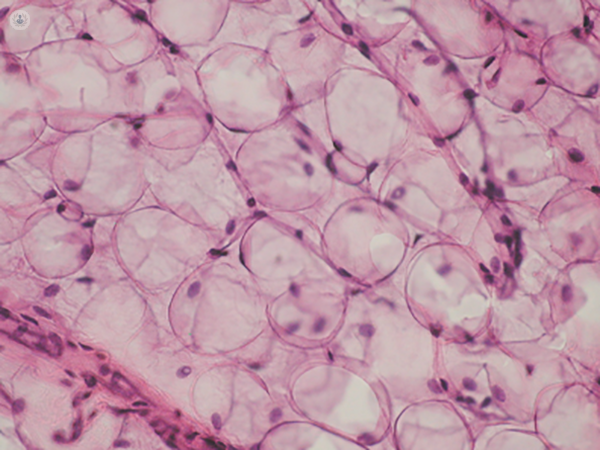Stromal vascular fraction (SVF)
Mr Sebastian Dawson-Bowling - Orthopaedic surgery
Created on: 05-30-2016
Updated on: 04-19-2023
Edited by: Karolyn Judge
What is stromal vascular fraction (SVF)?
A stromal vascular fraction (SVF) is a group of cells that have been extracted in a laboratory from adipose tissue (fat tissue). There are various techniques to extract these cells but they generally use enzymes, such as collagenase, that break up the fat tissue and facilitate the harvesting of these cells.

What are SVF cells used for?
SVF cells have potential regenerative abilities and can support neovascularisation and replace or repair cells in the body. They can, therefore, improving blood circulation, aid healing from traumatic injuries and have the potential to treat the wear and tear of cells caused by ageing.
As SVF cells contain a high concentration of stem cells, SVF therapy serves as a regenerator of sports injuries or injuries that occurred from accidents. It is of great help when there is damage to the joints, muscles, bones, cartilage and even nerves.
How are SVF cells obtained?
SVF cells are typically obtained through liposuction and contain various cell types. This includes mesenchymal and endothelial progenitor cells, adipose-derived stem cells, leukocyte subtypes, vascular smooth muscle cells and lymphatic cells. SVF cells are produced to contain a reproducible and composition of complex cells.
Situations where SVF therapy can be utilised
- Regenerative treatments
- Mobility rehabilitation treatments, such as traffic accidents or sports injuries
- Complementary treatments in dentistry
- Healing of wounds, ulcers, etcetera.
- Organic regeneration of organs such as the pancreas, liver, etc.
- The application in aesthetic medicine for the natural augmentation and reconstruction of breast and buttock tissue
- Reconstruction of muscle injuries caused by surgery
- Serious dermatological treatments like scleroderma
- Alleviated the toxic effects of radiotherapy on damaged tissues
- Accelerating the regeneration of bone fractures and joint injuries
How it SVF performed?
It is performed through a mini-liposuction, usually in the abdominal area using local anaesthesia. A small sample of 50cc of fat tissue is often enough.
Where are SVF and stem cells found?
There are two main areas: Adipose tissue (fat) and bone marrow.
Generally, extracting SVF cells from adipose tissue is preferable because the area and method of SVF cell collection are more accessible and cause less discomfort in patients than extracting bone marrow. In addition, the amount of cells and their viability are greater in fat than in bone marrow.
